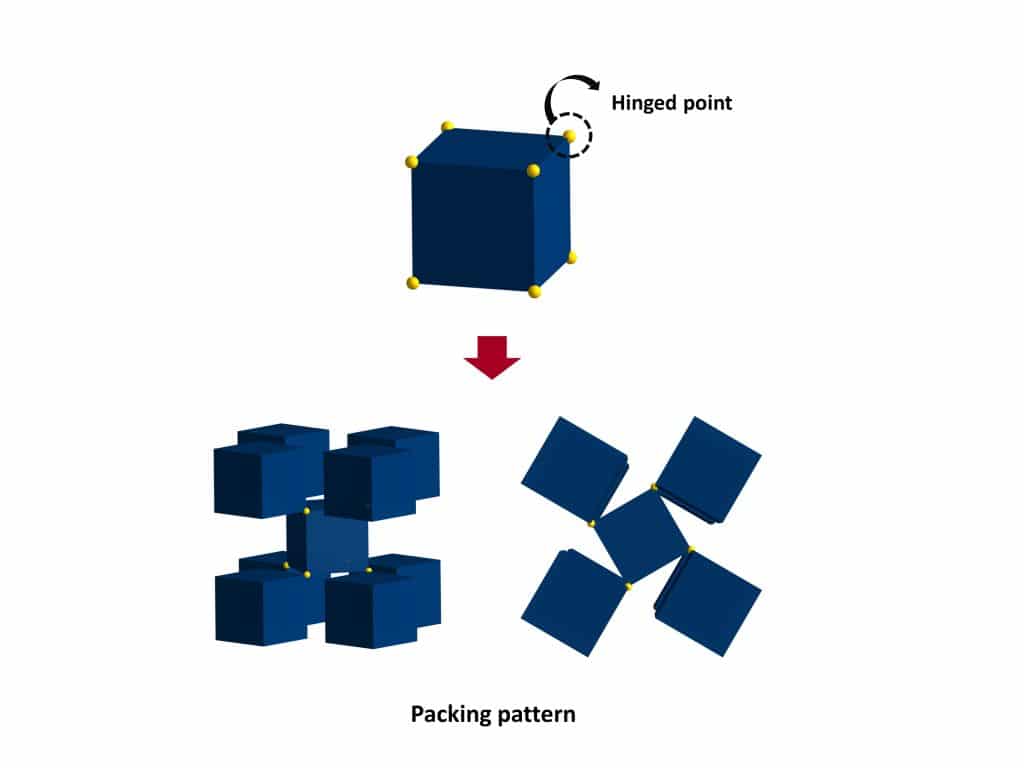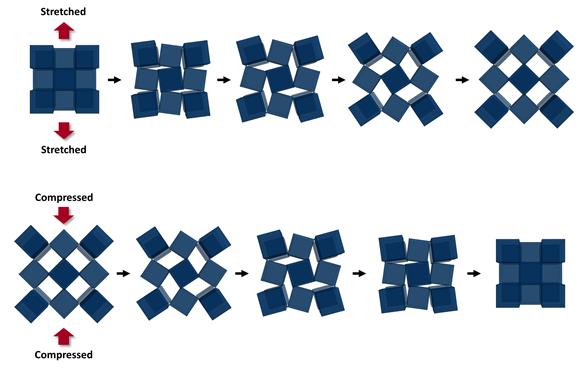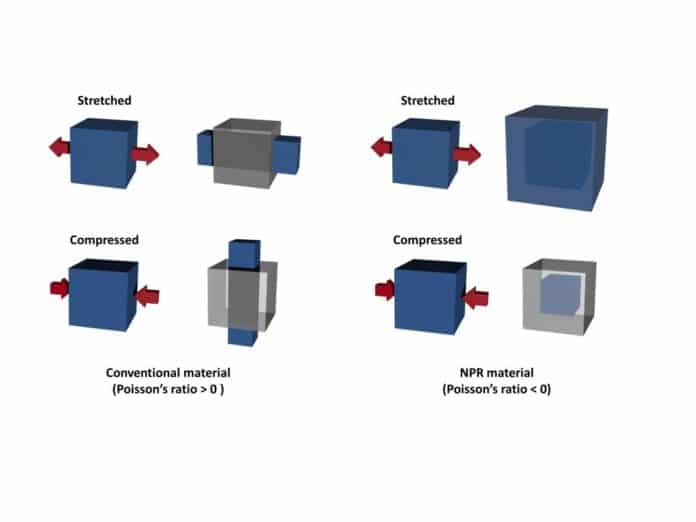Mechanical metamaterials exhibit unusual properties, such as negative Poisson’s ratio, which are difficult to achieve in conventional materials. Rational design of mechanical metamaterials at the microscale is becoming popular partly because of the advance in three-dimensional printing technologies. However, incorporating movable building blocks inside solids, thereby enabling us to manipulate mechanical movement at the molecular scale, has been a difficult task.
In a new study by the UNIST, scientists have developed a highly flexible Metal-Organic Framework (MOF) with the NPR property. Such discovery is especially worthy of notice because the NPR materials are potentially useful in applications like shock absorbing materials, sensors, and artificial muscles.
NPR is considered to be originated due to internal structures, such as special tessellation patterns. During the study, scientists realized that such rotating cubes in molecular scale inside flexible MOF, UPF-1.

This newly synthesized MOF (UPF-1) has a hinge point, responsible for the structural changes observed in UPF-1. Its rotating principle from hinged squares is responsible for NPR behavior in materials, through which materials contract and expand, thus exhibiting the NPR property of UPF-1.
EunJi Jin in the doctoral program of Chemistry at UNIST, the first author of this study said, “Our work demonstrates that the topology of the framework and flexible hinges inside the structure are intimately related to the mechanical properties of the material, providing a guideline for the rational design of mechanically responsive metal-organic frameworks.”

To establish the NPR behavior of UPF-1, scientists performed semiempirical calculations (DFTB) based on density function theory (DFT). They found that the Poisson’s ratio of UPF-1 was close to an estimation of negative Poisson’s ratio(- 1), in this way the weight moved vertically toward a path, given pressure. This exhibits the topology of UPF-1 is personally identified with its mechanical properties, recommending that different metamaterial design strategies are feasible for MOFs.
Metal-organic frameworks (MOFs) are created by assembling metal ions or clusters with organic molecules. The self-assembly process can lead to different ranges of structures, whose properties are defined primarily by pore size, shape, and chemical composition. According to the Cambridge Structural Database (CSD), more than 70,000 MOF structures have been designed and synthesized so far.

Professor Wonyoung Choe in the School of Natural Science at Ulsan National Institute of Science and Technology (UNIST) said, “One major discovery of this study is that out of 70,000 MOFs reported to date, certain structures can be the potential candidate materials with the NPR property. We expect new streams of NPR MOFs in the near future.”
The study is published in the journal of Science Advances.
